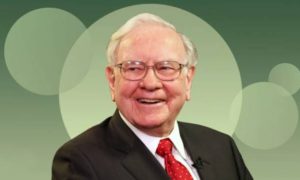If you want to be rich, it can be helpful to do things that millionaires and other wealthy people are doing. Fortunately, identifying the habits of financially successful people doesn’t have to be hard. Here are four rich people habits you should copy.
1. Use debt as a tool
Read More : 3 Warren Buffett Stocks That Are Screaming Buys in May (and Beyond)
Wealthy people are not afraid of debt. They understand that it can be used as a tool to help them use their money as wisely as possible and increase their net worth.
Many wealthy people borrow money to do things like start businesses or invest in real estate. They also borrow when they can do so at a low rate, rather than tying up their cash in something that doesn’t provide a very good return on investment.
For example, Warren Buffett got a mortgage when he bought his home even though he could have paid cash — because he wanted to invest his money instead. He borrowed about $120,000 in 1971 (in the form of a mortgage loan) and invested the money instead of paying cash for the home. The invested funds ended up being worth around $750 million.
Rather than being afraid of borrowing, be smart about when and how you use debt. For example, it makes sense to take out a mortgage to buy a home rather than paying cash because your home is an asset that should increase your net worth, and the mortgage interest rate will usually be lower than the return you could get with other assets like stocks.
But it does not make sense to put a vacation on a credit card, as you’ll just be incurring interest for something that doesn’t increase your wealth in the long run.
Read More : How Toxic Is Trump? Republican Group’s Hidden Camera Reveals Uncomfortable Truth
2. Prioritize investing
Research has shown wealthy people save at higher rates. This doesn’t apply to people who were born rich either. Wealthy people with “new money” tend to have even higher savings rates and earn higher returns.
When you prioritize investing, you can grow wealthier much more easily because your money is working for you. You don’t have to earn every $1 that grows your net worth. Your money can earn returns, which can be reinvested and earn even more for you.
If you invest $10,000 today and earn a 10% average annual return, that $10,000 will be worth $174,494 in three decades even if you never add another dollar to your account. That’s a lot of money you didn’t have to personally earn.
The more you invest, the more you benefit from compound growth and the easier it is to get rich — since less effort is required from you to make money. Open a brokerage account today if you want to build wealth. If you’re not sure what to invest in, an S&P 500 index fund is a pretty smart bet.
Read More : How Toxic Is Trump? Republican Group’s Hidden Camera Reveals Uncomfortable Truth
3. Develop multiple income streams
Many rich people have multiple sources of income. Their money may come from a job, but also from investment income or other sources. If you are dependent solely on one job, unemployment could leave you without funds and the ability to build wealth. You’re also limited in how much you can earn since you only have so much time to work.
But if you develop multiple income streams, your finances are less precarious and you can also earn money in multiple ways. You can develop multiple income streams by:
- Taking on a side hustle
- Turning your hobbies (such as crafting or dog walking) into a source of income
- Investing in assets that provide dividends
- Buying investment real estate
Consider where your interests are and how you can make money outside of work to help your wealth grow.
4. Set long-term goals
Finally, many wealthy people look toward the future when deciding on spending decisions. While a vacation or impulse purchase today may seem fun, it’s better to look at the big picture, consider what you want to accomplish, and prioritize it.
When setting your own goals, employ the SMART principle. Your goals should be specific, measurable, achievable, relevant and time limited. For example, you could set a goal to save $500 a month toward retirement over the next year and track your progress throughout the year.







































